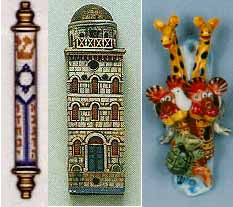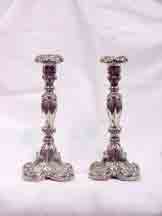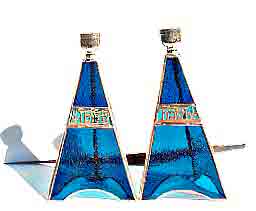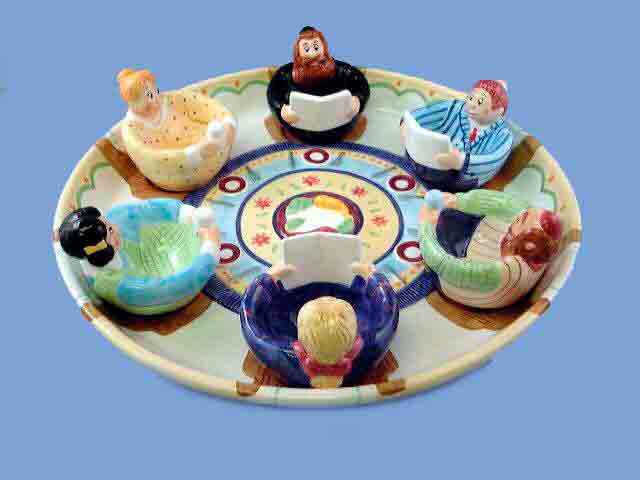 The
small box that contains these words is known as a mezuzah (from the
Hebrew word for "doorpost"). You see that the mezuzah is posted at
(roughly) eye level and at an angle facing inward.
The
small box that contains these words is known as a mezuzah (from the
Hebrew word for "doorpost"). You see that the mezuzah is posted at
(roughly) eye level and at an angle facing inward.THE JEWISH HOME
The material aspects of Judaism are not just found in public expressions, like the synagogue. Much of Jewish ritual life is found in the home, and expressions of Jewish identity can be found there, too.
Often these home-bound expressions of Jewish identity act as cultural markers, so that the home itself is made Jewish. For instance, since antiquity, Jews have interpreted the command to "mark their doorposts" with God's word (usually interpreted as the shema, the monotheistic confession of Judaism) as a requirement to post God's word on the lintels of their houses (and sometimes on every doorway in the house), like this:
 The
small box that contains these words is known as a mezuzah (from the
Hebrew word for "doorpost"). You see that the mezuzah is posted at
(roughly) eye level and at an angle facing inward.
The
small box that contains these words is known as a mezuzah (from the
Hebrew word for "doorpost"). You see that the mezuzah is posted at
(roughly) eye level and at an angle facing inward.
The mezuzah need only be a sealed container containing a parchment with the prescribed prayers written on it. This is what an "open" mezuzah looks like:

Posting a mezuzah in the doorway of one's house is a public sign of religious affiliation (for those who know what it means). But it can also provide an opportunity to personalize one's Jewish identity, to adapt this public declaration of Jewishness with a "style" conducive to one's private home. Here are some examples of such "stylized" mezuzahs:

The mezuzah on the left is somewhat "traditional"; the middle mezuzah is more stylized, but still evokes an "old world" feel; the mezuzah on the right is clearly meant to be "fun," perhaps for a child's bedroom.
Other markers of Jewishness can often be found throughout the modern Jewish home, and are subject to the same degrees of "modernization" and "inculturation" found in synagogues and mezuzahs.
Candlesticks are necessary for those who perform the weekly lighting of Sabbath candles at home. These Sabbath candlesticks can be "old world" and "traditional":

... or more "modernist," meant to reflect personal style while still signaling the materiality of a Jewish home:

The Seder, the ritual meal of the annual Jewish festival of Passover, is also an occasion for simultaneous expressions of Jewish and "contemporary" culture. At the center of a Passover meal is the Seder plate, on which ritual elements are placed.
 "Traditional" form of Jewish material culture will evoke an "old world,"
European style. At the center of the plate, in traditional Hebrew script,
is the word "Passover"; the indentations are for specific ritual elements
(horseradish, parsley, roasted egg, and so forth).
"Traditional" form of Jewish material culture will evoke an "old world,"
European style. At the center of the plate, in traditional Hebrew script,
is the word "Passover"; the indentations are for specific ritual elements
(horseradish, parsley, roasted egg, and so forth).

Here the "Seder plate" format is the same--containers on the plate for all of the ritual elements of the Seder--but it is given a "fun," stylized feel, with images of various types of Jews gathered around their own Seder table (note their own schematic Seder plate represented in the middle of this Seder plate).